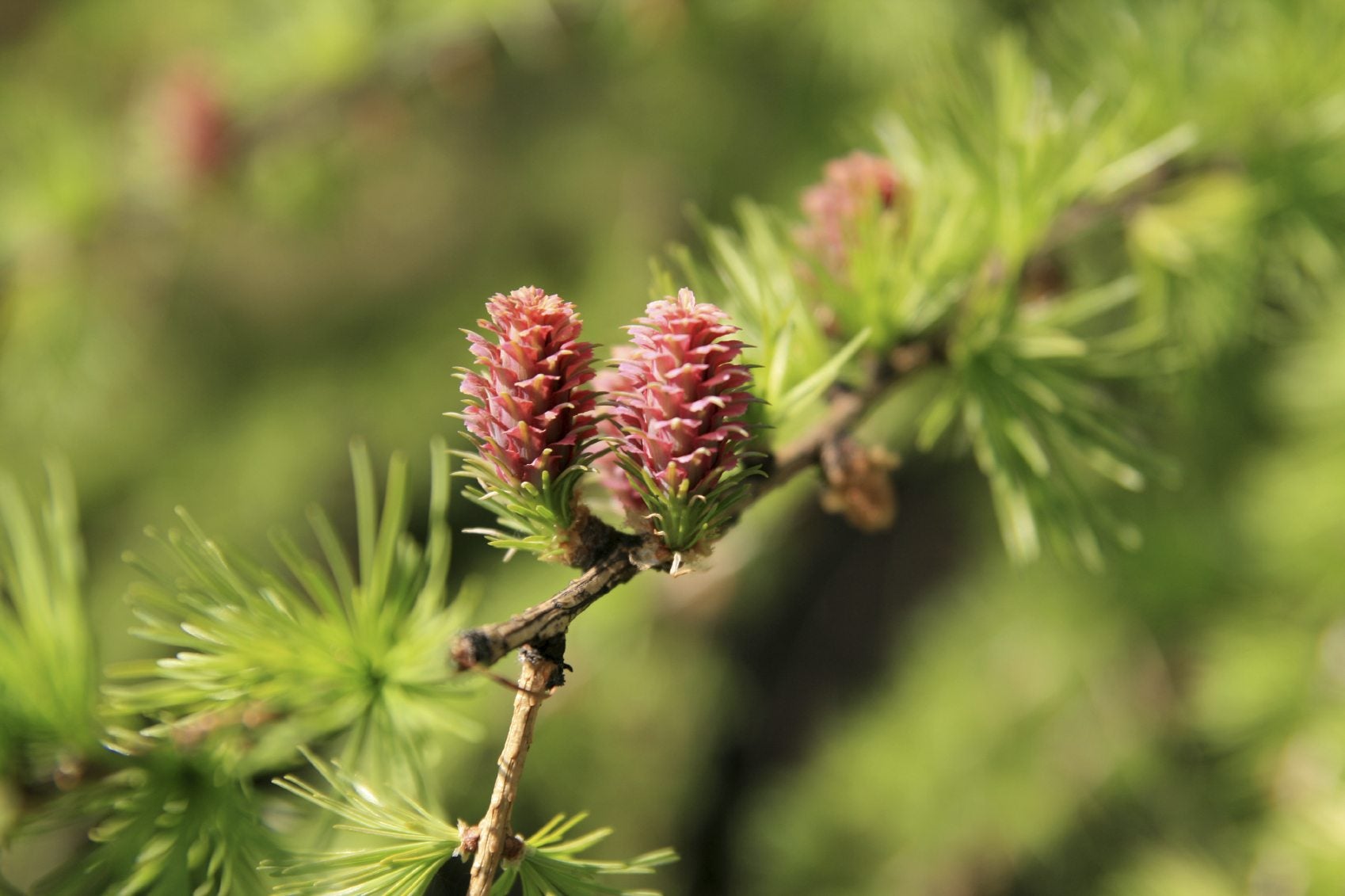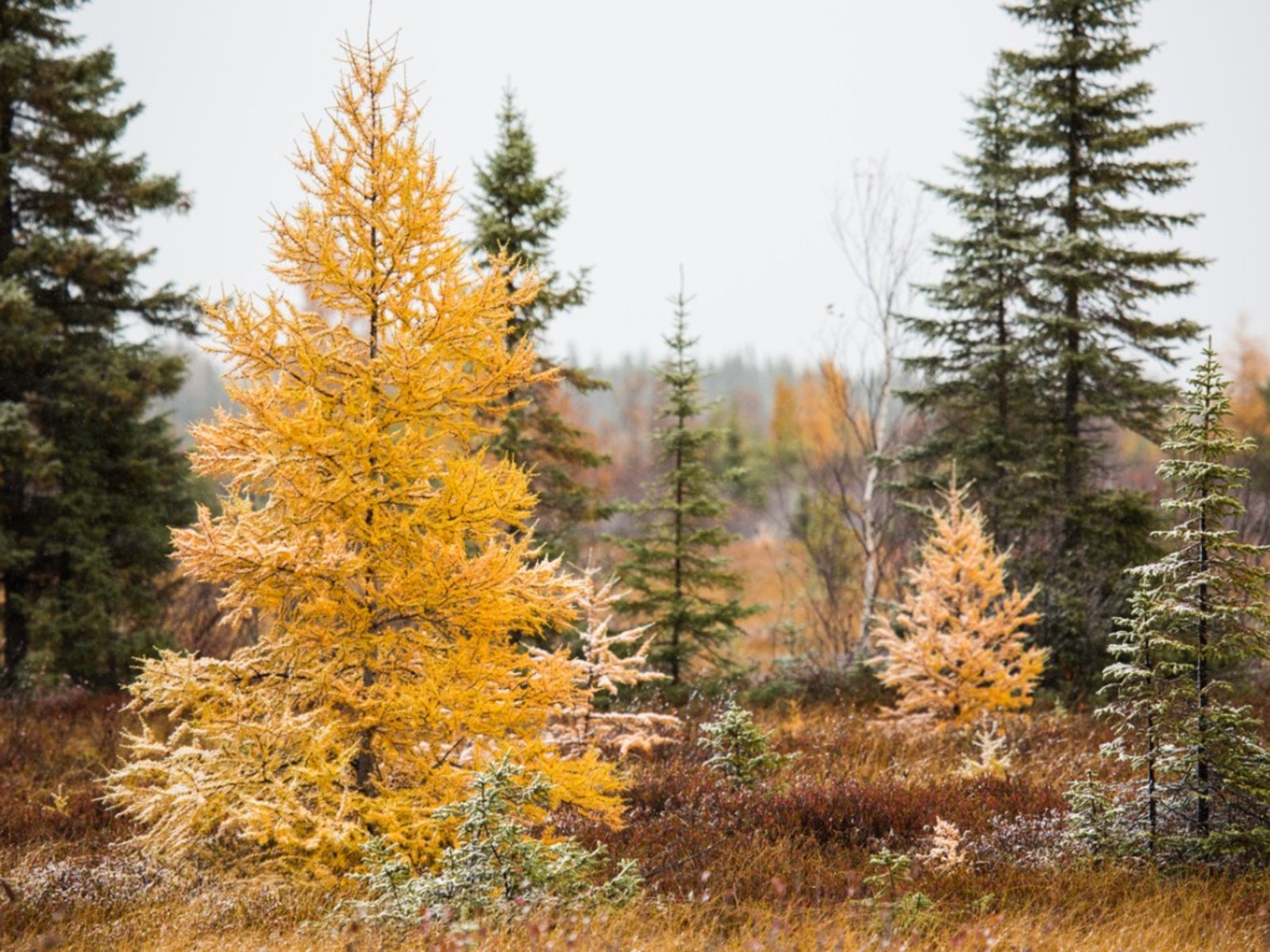Growing A Larch Tree: Larch Tree Types For Garden Settings


If you love the effect of an evergreen tree and the brilliant color of a deciduous tree, you can have both with larch trees. These needled conifers look like evergreens in spring and summer, but in the fall the needles turn golden yellow and drop to the ground.
What is a Larch Tree?
Larch trees are large deciduous trees with short needles and cones. The needles are only an inch (2.5 cm.) or so long, and sprout in little clusters along the length of the stems. Each cluster has 30 to 40 needles. Tucked in among the needles you can find pink flowers that eventually become cones. The cones start out red or yellow, turning to brown as they mature. Native to many parts of Northern Europe and Asia as well as Northern parts of North America, larches are happiest in cold climates. They grow best in mountainous areas but tolerate any cool climate with plenty of moisture.
Larch Tree Facts
Larches are tall trees with a widespread canopy, best suited to rural landscapes and parks where they have plenty of room to grow and spread their branches. Most larch tree types grow between 50 and 80 feet (15 to 24.5 m.) tall and spread as much as 50 feet (15 m.) wide. The lower branches may droop while the mid-level branches are nearly horizontal. The overall effect is similar to that of a spruce. Deciduous conifers are rare finds, and they are well worth planting if you have the right location. Although most are massive trees, there are a few types of larch trees for gardeners with less space. Larix decidua 'Varied Directions' grows 15 feet (4.5 m.) tall with irregular branches that give it a distinctive winter profile. ‘Puli’ is a dwarf European larch with lovely weeping branches held close to the trunk. It grows up to 8 feet (2.5 m.) tall, and 2 feet (0.5 m.) wide. Here are some standard-sized larch tree varieties:
- European larch (Larix decidua) is the largest species, said to grow up to 100 feet (30.5 m.) tall, but rarely exceeds 80 feet (24.5 m.) in cultivation. It is known for its brilliant fall color.
- Tamarack (Larix laricina) is a native American larch tree that grows up to 75 feet (23 m.) tall.
- Pendula (Larix decidua) is a shrubby larch that becomes a ground cover if not staked upright. It spreads as much as 30 feet (9 m.).
Growing a larch tree is a snap. Plant the tree where it can get at least six hours of sunlight per day. It can’t tolerate hot summers and should not be planted in U.S. Department of Agriculture zones warmer than 6. Frozen winters aren’t a problem. Larches won't tolerate dry soil, so water them often enough to keep the soil moist. Use organic mulch to help the soil hold moisture.
Gardening tips, videos, info and more delivered right to your inbox!
Sign up for the Gardening Know How newsletter today and receive a free copy of our e-book "How to Grow Delicious Tomatoes".

Jackie Carroll has written over 500 articles for Gardening Know How on a wide range of topics.
-
 4 Superfast Composting Methods: Turn Waste Into Garden Gold In 30 Days Or Less
4 Superfast Composting Methods: Turn Waste Into Garden Gold In 30 Days Or LessTry the fastest composting methods to turbocharge your pile and transform kitchen scraps and garden waste into finished compost in just a few weeks.
By Mary Ellen Ellis
-
 Best Spider Plant Soil – Complete Soil Guide And Expert Tips For Keeping Plants Happy
Best Spider Plant Soil – Complete Soil Guide And Expert Tips For Keeping Plants HappySpider plants are fun and easy plants to grow, but what is the best soil for a spider plant? Selecting the right soil is important so they can thrive.
By Bonnie L. Grant
